Introduction to the Importance of User-Friendly Website Design
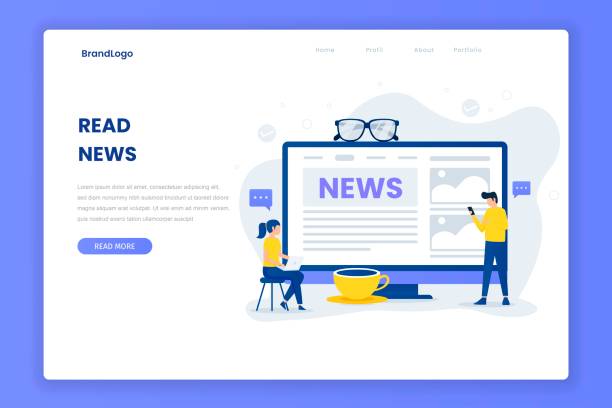
In the current digital age, having a website is not just about having an online presence; rather, it should be designed from the outset with the goal of creating a pleasant experience for users.
#Website_design that focuses on #user_friendliness is a critical factor for the success of any business or project in the virtual space.
This approach forms the core of #user_experience (UX) and ensures that visitors can easily find the information they need, engage with content, and achieve their goals.
A user-friendly website not only increases conversion rates and user retention but also builds trust and loyalty.
The simpler, more understandable, and enjoyable a site is, the more likely users are to return and re-engage with it.
This is especially true in a highly competitive market, where it marks the difference between a successful business and an ordinary one.
In this article, we will explanatorily and educationally cover all aspects of user-friendly website design so that you can provide the best possible experience for your visitors and achieve #online_success.
The need for a user-friendly website design is not limited to the visual appearance of the site but also includes its structure, loading speed, and accessibility.
A website that is difficult to navigate or loads slowly will quickly frustrate users, causing them to turn to your competitors.
Therefore, investing in web optimization for the user is a smart and long-term investment that will yield tangible results.
Below, we will delve into principles and techniques that will help you design a site with an excellent user experience and convert your audience into loyal customers.
This path requires a deep understanding of user needs and behaviors so that you can implement solutions that are truly useful and appealing to them.
Do you dream of a thriving online store but don’t know where to start?
Rasaweb is your comprehensive e-commerce website design solution.
✅ Attractive and user-friendly design
✅ Increase sales and revenue⚡ Get free consultation
Fundamental Principles of User Experience (UX) and User Interface (UI)
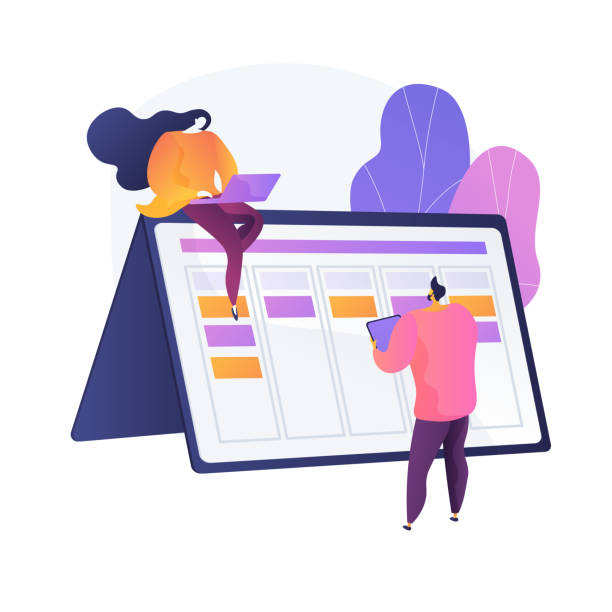
To achieve a user-friendly website design, understanding the distinction and correlation between User Experience (UX) and User Interface (UI) is essential.
UX refers to the user’s overall feeling when interacting with a product or service and goes beyond merely the appearance of a website.
This includes usability, accessibility, and the pleasure of interaction.
In contrast, UI relates to the visual and interactive elements of a website such as buttons, icons, layout, and typography.
UI is the tool that makes UX tangible.
A good UX cannot be fully realized without a suitable UI, and a beautiful UI without strong UX is merely an empty shell.
Fundamental UX principles include user-centricity (understanding real user needs), simplicity (removing unnecessary elements and complexities), consistency (using recognizable design patterns), and feedback (informing the user about the status of their activities).
In the UI section, the focus is on harmonizing colors, fonts, visual hierarchy, and smooth interactions to provide a pleasant and efficient experience.
A user-friendly website design requires a delicate balance between these two aspects.
This section will expertly and explanatorily help you understand these concepts more deeply and apply them in your designs.
Remember that every element in your design should have a purpose and contribute to improving the user experience, not just added for aesthetics.
For example, Call to Action buttons should be clearly visible, and their text should be clear and persuasive so that the user knows exactly what to do.
Reviewing the best usability principles and implementing them will greatly assist you on this path.
Information Architecture and Seamless Navigation
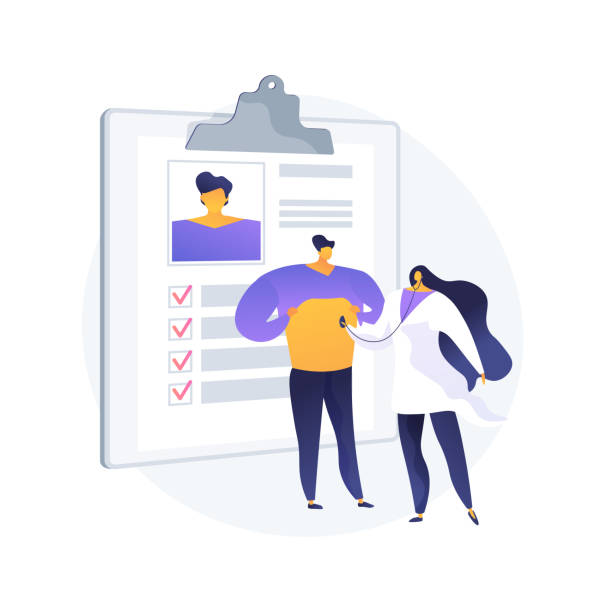
Information Architecture (IA) is the backbone of any user-friendly website design.
This concept refers to organizing, structuring, and labeling content in an effective and sustainable way that helps users find and understand information.
Without strong IA, even the most beautiful websites can be confusing and frustrating for users.
Seamless and logical navigation is the key to retaining users on your site.
Users should be able to easily move from one section to another and always know where they are on the site and how they can reach their desired destinations.
This section will guide and educate you to understand the principles of IA and implement them in your website’s structure.
Good IA includes designing clear navigation menus, using logical classification systems, and hierarchical content structuring.
Tools such as Sitemaps and Wireframes are very useful at this stage.
Also, navigation should be consistent and predictable; users expect navigation elements to be located in similar places throughout the site.
Using visual cues, such as breadcrumbs, helps users understand their path.
For example, if your website has different sections for products, services, and a blog, these sections should be organized so that users can quickly and easily access each of them without confusion.
Below is a comprehensive table of key information architecture elements essential for every user-friendly website design:
| Information Architecture Element | Description and Application |
|---|---|
| Global Navigation | Main site menus that are constant across all pages and provide access to key sections. |
| Local Navigation | Menus specific to a particular section of the site, directing to its subsections. |
| Breadcrumbs | Paths that show the user’s current location in the site hierarchy and are clickable. |
| Search | Site search functionality to quickly find specific content. |
| Sitemap | An overview of all pages and the site structure, helping search engines and users. |
Visual Design and Aesthetics in User Attraction
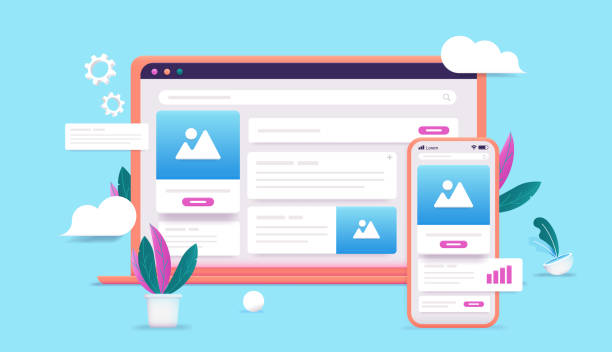
Beyond functionality, visual aesthetics play a vital role in attracting and retaining users on a website.
An attractive and harmonious visual design not only makes the site look professional but also instills a sense of trust and credibility in the user.
This section will entertainingly and explanatorily help you understand the importance of visual elements in a user-friendly website design.
Colors, fonts, images, and white space all collectively convey your brand’s message and influence the user experience.
Choosing the right color palette can evoke specific emotions in the user; for example, blue often conveys trust and calmness, while red can signify passion and energy.
Color psychology plays an important role in this choice.
Typography (font selection and arrangement) is equally important.
Fonts should be legible and consistent with your overall brand style.
Sufficient use of white space around elements allows content to breathe and prevents visual clutter, which helps improve readability and overall experience.
Images and videos should be high quality, relevant to the content, and load quickly.
Integrated visual design not only beautifies the site but also helps increase its usability.
An attractive design creates a positive impression of the site even before the user reads the content.
For example, a user-friendly website for an online clothing store should entice customers to purchase with high-quality product images and an appealing layout.
These visual factors together create an unparalleled user experience that encourages users to stay and explore the site further.
Remember that beauty is in the eye of the beholder, so the goal should always be to create an experience that is both functional and visually pleasing.
Does your current e-commerce website design not generate the expected sales for you?
Rasaweb specializes in professional e-commerce website design!
✅ An attractive and user-friendly site aimed at increasing sales
✅ High speed and security for an ideal shopping experience⚡ Get free online store design consultation with Rasaweb!
Content Strategy for Maximum Engagement
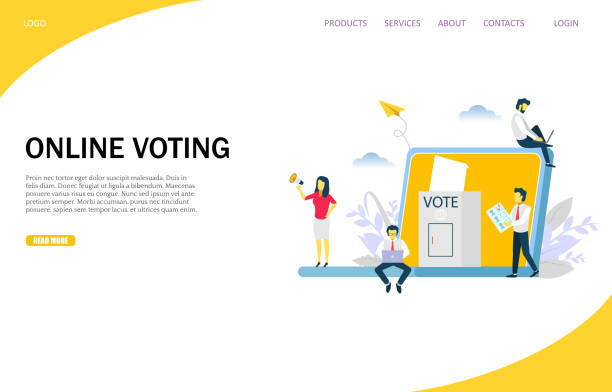
Content is king for every user-friendly website design, and its presentation can significantly impact user engagement.
A strong content strategy helps you effectively convey your message to your target audience and keep them engaged.
This section will guide and analyze the importance of content planning and presenting it in an engaging and understandable manner.
Your content should not only be informative but also encourage users to take action, whether it’s purchasing a product, subscribing to a newsletter, or sharing information.
This means every piece of content should have a clear purpose.
Web texts should be concise, clear, and scannable.
Users on the web typically skim content quickly rather than reading line by line.
Therefore, using headings, lists, short paragraphs, and highlighting keywords significantly increases readability.
Additionally, the tone and style of the content should align with your brand identity and resonate with your target audience.
Video content, images, infographics, and podcasts can help increase the attractiveness and diversity of your content and be useful for audiences with different learning styles.
Furthermore, encouraging user participation through comment sections, contact forms, or calls to action increases engagement and helps create an active community around your website.
A website with excellent user experience continuously provides new, relevant, and high-quality content that addresses user needs and encourages them to return.
This approach is the foundation of any user-friendly website design that seeks sustainable results and increased customer loyalty.
Reviewing the principles of content marketing can provide valuable insights.
The Importance of Responsiveness in Modern Website Design

In today’s world, where users access the internet from various devices, from smartphones and tablets to laptops and desktop computers, the importance of Responsive Design has doubled.
A user-friendly website design in the current era must undoubtedly be responsive.
This means your website should be able to automatically adjust its layout and content to the size of the user’s device screen, without compromising usability or visual appeal.
Ignoring this principle can lead to losing a large segment of your audience, as many users prefer to access the internet with their mobile devices.
The benefits of responsive design are not limited to improving user experience.
This approach also enhances Search Engine Optimization (SEO), as Google and other search engines prefer responsive websites over non-responsive ones in their search results.
Maintaining a single URL for all devices also helps prevent duplicate content issues.
This section will expertly and informatively show you how a user-friendly site and responsive site can increase your traffic and engagement.
Given the growing number of mobile users daily, responsive web design is no longer a luxury option but a necessity.
This ensures that regardless of the device a user employs, they will always have full and optimized access to your content, which is a crucial factor for having a user-friendly website design.
Ensuring correct and optimal site performance across all devices is a major step towards user satisfaction and your online success.
Website Speed and Performance Optimization

Website loading speed is one of the most critical factors determining the success of a user-friendly website design.
Today’s users are impatient and expect web pages to load in a fraction of a second.
Any delay, even a few milliseconds, can lead to the user leaving the site and losing a potential visitor.
This section will analytically and guidance-wise help you understand the importance of site speed and learn optimization methods.
Not only do users prefer faster sites, but search engines like Google also consider loading speed as an important ranking factor.
A user-friendly site should always prioritize speed and performance.
Numerous factors can affect site speed, including image size, JavaScript and CSS codes, web hosting, and the number of HTTP requests.
Image compression, code optimization, using Content Delivery Networks (CDNs), and caching are among the main methods for increasing loading speed.
For instance, image compression without noticeable quality loss can significantly reduce the overall page size.
Also, choosing a reliable web hosting provider and optimizing the database play an important role in improving performance.
The table below introduces some key tools and methods for website speed optimization:
| Optimization Method/Tool | Description and Purpose |
|---|---|
| Google PageSpeed Insights | A Google tool for speed analysis and optimization suggestions. |
| Image Optimization | Reducing the size of image files without significant quality loss for faster loading. |
| Caching | Temporarily storing data in the user’s browser for faster loading on subsequent visits. |
| Content Delivery Network (CDN) | Distributing site content via multiple servers worldwide to reduce response time. |
| Minification | Reducing the size of CSS, JavaScript, and HTML files by removing whitespace and unnecessary characters. |
By implementing these techniques, you can significantly increase your website’s speed and ensure that your user-friendly website design provides a positive experience for all visitors.
High speed not only helps retain users but also improves your ranking in search engines.
For more information on website speed optimization, you can refer to Google PageSpeed documentation.
Accessibility and Inclusion in Web Design

A truly user-friendly website design extends beyond typical users to include all individuals, especially those with disabilities.
Web accessibility means designing and developing websites in such a way that people with a wide range of abilities can use them.
This includes individuals with visual, auditory, motor, or cognitive impairments.
This section will educate and provide thought-provoking content on why accessibility matters and how it can be implemented in web design.
Have you ever considered how a visually impaired user could use your website? Or someone who cannot use a mouse?
The WCAG (Web Content Accessibility Guidelines) standards provide a comprehensive framework for creating accessible websites.
These standards include requirements such as adding alternative text (alt text) for images, using sufficient color contrast for texts, ensuring keyboard navigability, and providing captions for video content.
Implementing accessibility is not just an ethical responsibility; it can also offer legal, commercial, and SEO benefits.
An accessible site expands your audience reach and demonstrates your commitment to inclusion and equality.
For example, if your website features educational videos, providing captions or text transcripts for these videos allows individuals with hearing impairments to access your content.
Ultimately, a user-friendly website design that prioritizes accessibility provides a positive and inclusive experience for everyone and helps responsible businesses enhance their reputation.
Does your current e-commerce website design not generate the expected sales for you?
Rasaweb specializes in professional e-commerce website design!
✅ An attractive and user-friendly site aimed at increasing sales
✅ High speed and security for an ideal shopping experience⚡ Get free online store design consultation with Rasaweb!
Testing and Iteration for Continuous Improvement
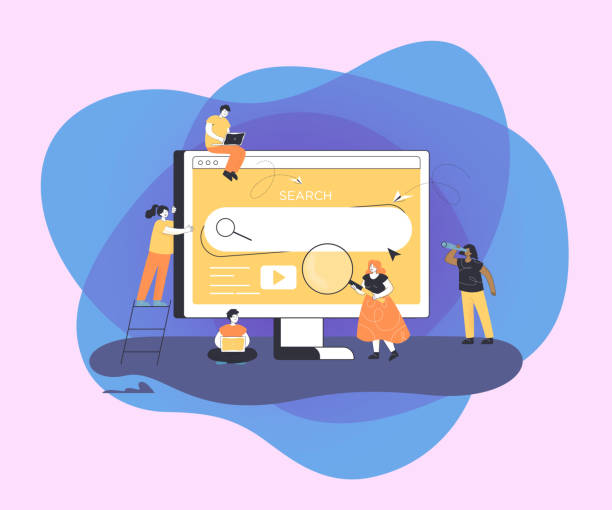
Web design is not a static process, but a continuous cycle of testing, feedback, and improvement.
To ensure that a user-friendly website design is truly effective, it must be regularly tested and optimized based on real user data and feedback.
This section will guide and expertly address the importance of usability testing and iteration cycles in the web design process.
Many design mistakes and weaknesses only become apparent after real users interact with the site.
Ignoring this stage can lead to creating a site that seems good to designers but is confusing or ineffective for users in practice.
There are various types of tests you can conduct, including Usability Testing, which involves observing users as they interact with the site; A/B testing, which compares two different versions of a page to determine the most effective one; and Heatmaps, which track user activity on the page.
Gathering feedback through surveys and feedback forms can also provide valuable insights.
After data collection, the Iteration stage begins, where necessary changes are applied based on the findings.
This feedback and improvement cycle should be continuously repeated to ensure your site remains up-to-date and aligned with user needs.
For example, if data indicates that users abandon the purchase process at a specific stage, that particular stage should be reviewed and optimized.
A user-friendly website design is never considered “finished”; rather, it is constantly evolving and improving to ensure it provides the best possible experience for visitors.
Focusing on continuous analysis and adapting to user behavior is key to sustained success.
Future Trends and Key Considerations in User-Friendly Website Design

The world of web design is constantly evolving, and to maintain a user-friendly website design, one must be aware of the latest trends and technologies.
Artificial intelligence, augmented reality (AR), and voice interactions are just a few examples of technologies shaping the future of web design and holding great potential for improving user experience.
This section will informatively and analytically cover some of these emerging trends and key considerations for the future of user-friendly website design.
Artificial Intelligence (AI) can elevate interaction to a new level by personalizing content and user experience, such as suggesting products based on a user’s previous interests.
AI-powered chatbots can also provide immediate and efficient support.
On the other hand, Mobile-First Design will remain a priority, even with the advent of new technologies.
Voice User Interfaces (Voice UI) and the use of voice search are also expanding, and designers must be ready to embrace these changes.
Web security should never be overlooked; ensuring the security of user data through SSL certificates and other security protocols is an integral part of an effective website design.
Finally, the focus on sustainability and green website performance is also increasing.
Websites that operate with less energy consumption not only help the environment but are also more efficient.
Tracking these trends and incorporating them into design strategies will help you always have a user-friendly and leading website design.
The future of the web belongs to those who are ready to embrace changes and adapt to the ever-increasing needs of users.
Frequently Asked Questions
And other services of Rasaweb Advertising Agency in the field of advertising
Smart Content Strategy: Designed for businesses looking to manage campaigns through the use of real data.
Smart Website Development: A fast and efficient solution to increase sales with a focus on custom programming.
Smart Sales Automation: An effective tool to boost sales by customizing the user experience.
Smart Google Ads: A new service to increase website traffic through user experience customization.
Smart Data Analysis: Professional optimization to improve SEO ranking by optimizing key pages.
And over a hundred other services in the field of online advertising, advertising consulting, and organizational solutions
Online Advertising | Advertising Strategy | Advertorials
Resources
User-Friendly Website Design on Digikala Mag
User Experience Article on Virgool
User Experience Design Principles on Hamyar WordPress
User-Friendly Web Design Guide on Rastin Web
? Transform your business in the digital world with Rasaweb Afarin Digital Marketing Agency. From secure and attractive website design to search engine optimization and social media management, we guarantee your growth and success with targeted and specialized solutions.
📍 Tehran, Mirdamad Street, next to Bank Markazi, Southern Kazeroon Alley, Ramin Alley, No. 6


